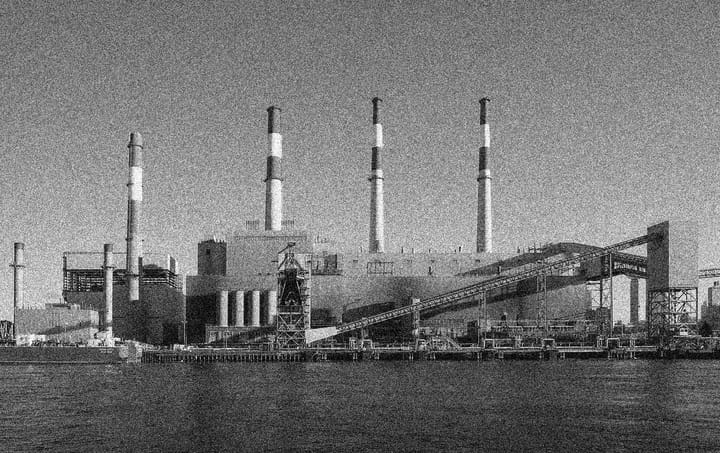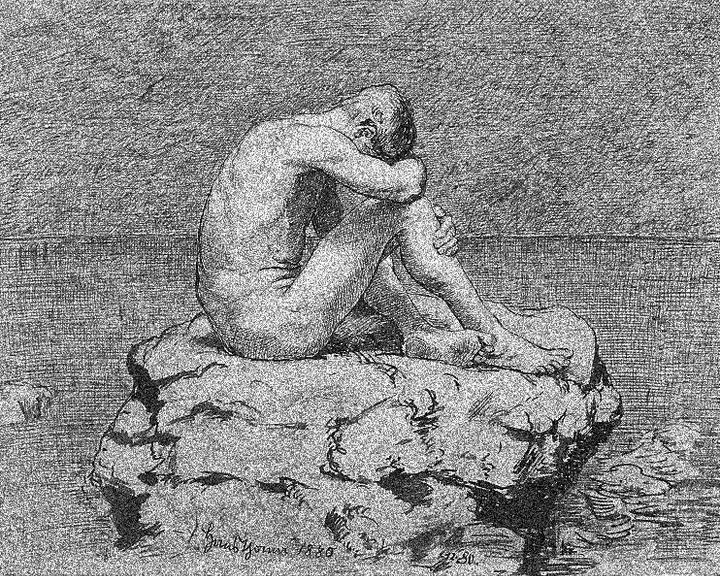Is This the Green New Deal?
A response to Adam Tooze on the dawning “post-neoliberal” era.

In his piece “Has Covid ended the neoliberal era?”, a preview of Shutdown (released last week), historian Adam Tooze pumps the brakes on claims about the supposed “end” of neoliberalism in the time of COVID.
The election of Joe Biden and the fact that his inauguration took place at the appointed time on 21 January 2021 restored a sense of calm. But when Biden boldly declares that “America is back”, it has become increasingly clear that the next question we need to ask is: which America? And back to what? The comprehensive crisis of neoliberalism may have unleashed creative intellectual energy even at the once-dead centre of politics. But an intellectual crisis does not a new era make. If it is energising to discover that we can afford anything we can actually do, it also puts us on the spot. What can and should we actually do? Who, in fact, is the we?
It is hard to disagree with the fundamentals of Tooze’s analysis. Clearly something has ended, but it is not clear what, and we have even less sense of what might now be replacing it (a feeling which probably explains the dogged and at times exasperating popularity of Gramsci’s “interregnum” phrase). Disorientation need not lead to desperation, however. Confused as we may be at the end of the end of history, Tooze nonetheless finds hope in the defeated but visionary efforts of the Left.
Even as the advocates of the Green New Deal, such as Bernie Sanders and Jeremy Corbyn, had gone down to political defeat, 2020 resoundingly confirmed the realism of their diagnosis. It was the Green New Deal that had squarely addressed the urgency of environmental challenges and linked it to questions of extreme social inequality. It was the Green New Deal that had insisted that in meeting these challenges, democracies could not allow themselves to be hamstrung by conservative economic doctrines inherited from the bygone battles of the 70s and discredited by the financial crisis of 2008. It was the Green New Deal that had mobilised engaged young citizens on whom democracy, if it was to have a hopeful future, clearly depended.
On first glance, this reads like a lament that these democratic socialists have been sidelined at precisely the moment we need them most. But in fact Tooze claims that while they have been defeated, their ideas live on, absorbed in and accommodated by more centrist institutions:
Contrary to the fear that Covid-19 would distract from other priorities, the political economy of the Green New Deal went mainstream. “Green Growth”, “Build Back Better”, “Green Deal”—the slogans varied, but they all expressed green modernisation as the common centrist response to the crisis.
No doubt certain segments of the Left have been successful in getting their ideas absorbed within Democratic circles—the modern monetary theorists, the care economy advocates, the radical labor market economists. But are we to take these shifts as evidence of a nascent Green New Deal? Is this the excitement that comes with Sunrise activists and Alexandria Ocasio-Cortez occupying Nancy Pelosi’s office?
Tooze is undoubtedly right about the practical death of the state as a parsimonious housekeeper with strict limits on budgeting. And there is no question that the financial tap is on: who knows for how long, but massive state spending is back on the table. Yet so far this stimulus spending has gone directly from central banks to individual bank accounts or straight to corporations, with little to no strings attached; that is, the funds did not go to public works projects, public goods, or social services. This was justified by what Adolph Reed has called a “Wall-Street-Keynesian” logic of consumer sovereignty, a far cry from the New Deal ethos of world rebuilding, both socialist and nationalist.
Tooze’s own criticism of Biden seems to be that the interventions themselves would have been better if pushed by a popular force:
On the one hand, [the scale of economic interventions] exploded the bounds of neoliberal restraint and their economic logic confirmed the basic diagnosis of interventionist macroeconomics back to Keynes…. On the other hand, they were made from the top down. They were politically thinkable only because there was no challenge from the left and their urgency was impelled by the need to stabilise the financial system.
It would make sense if by this Tooze means that the policies would have looked different coming from a popular Left. But he seems to be saying that the problem is not that the policies are unimaginative or wrongheaded, but simply that they came about in an unfortunate way, carried out haltingly and defensively by centrists, not boldly led by a popular Left.
This echoes prominent leftwing criticism of the Biden spending packages: that they’re simply too small and conditional. And they certainly are. Yet what if the Left’s misgivings about the rising transfer state and its programs should be qualitative, not just quantitative? The old New Deal was a massive experimental program in a mixed economy and national development. Spurred on by a fractious but densely organized coalition between labor and small business, the Roosevelt administration did not just throw money at their problems; they invested in long-term public services, the electrification of rural areas, the building of dams, roads, bridges and other infrastructure. In its most ambitious moments, public money was spent to build public goods with very little private sector involvement. This kind of remaking of the economy for the public good has been so far completely absent from the policy toolkit of the crisis fighters. Instead, policy makers have opted to replace the invisible hand of the market with the invisible hand of the state: a referee who will occasionally assist the players but never partake in the game itself.
The qualitative limits of these policies are also directly related to the inability of the center-left to square the circle between technocratic governance and popular power. The more the business of “government” gets left to the central banks, and the more economic policy relies on simple cash-transfer magic, the less the “Left” has to offer as a philosophical counter-vision. This implies surrendering the idea that once supported the socialist hypothesis: that the world can and should be made and remade by its people. Instead, orthodoxy now holds that the world can and should be made and remade by people’s money (“Vote with your dollars” as the mantra of the future). As long as central banks can maintain certain consumption levels through cash transfers, the enormous gaps in inequality, the cannibalization of public services, and the decay of social infrastructure can continue. If this is the end of neoliberalism, whatever’s next might hardly be better.
Tooze recognizes that there is something insidious here about recent state spending, and definitely not in keeping with the promise of the Green New Deal. In a recent Odd Lots podcast, he expresses sympathy with the idea that the Democrats are perhaps overly reliant upon a temporary “sugar high.” On another podcast he describes the role of the Left, and specifically the modern monetary theorists, in the Biden administration as “opening the gateway to a disinhibited public-private project.” These are disheartening notes to strike, but probably more in line with the Bidenite political project.
A similar uneasiness holds for the GND coalition. The Green New Deal has become an embarrassing phrase in some respects: it is employed either by activists to indicate a “radical” (whatever that means) response to climate change, or else by NGOs to pad their “green futures” copy. But two of the three words in the phrase point to the best historical precedent on offer for the kind of grand remaking of the American economy. Rather than adopting a “This but more!” position, calling for quantitative increases to the cash transfer machine without changing its quality, the Left should be ruthlessly pointing up the disjunction between the current moment and the visionary experimentation of FDR’s administration. Anything short of this risks cheering on the further march of an emboldened technocratic center.
Tooze is certainly right to think that the scale of the climate crisis offers opportunities to implement wide-ranging changes, but it’s premature to assume that these big shifts will come from advocates of the GND in government. Consider the disconnect: it’s precisely the moment when everyone has lost faith in a totally exhausted democratic project that politicians are willing to open up the spigot of public dollars. Now that popular democracy has been so thoroughly emasculated and popular imagination so radically constrained, what exactly is the risk of giving the citizen-consumers more dollars? The demand-side stimulus, which seems to have blown apart neoliberal stinginess, is more cynically read as the culmination of a world where money sets out the parameters of public policy in an even more fundamental sense.
What would an alternative to all of this tampering look like? First and foremost, an imaginative Green New Deal would look to its namesake in awe and envy at the world it helped to build (and the political supremacy it conferred on its builders). The New Deal shook the financiers to their core; “economic royalists” who detested the simple building of dams, the planting of trees, the very idea of planning. Yet, today’s Green New Dealers look at the original New Deal and find it lacking, uninspiring, exclusionary, and dull. Ironically, the financiers are not running scared of the green future. The CEOs of Citigroup, Bank of America, and Wells Fargo have all pledged to net zero carbon emissions by 2050—the same goal outlined by the now infamous GND House resolution. If our green future is one that can be printed and circulated on US greenbacks, without the mobilization of the American workforce, the taxation of American wealth, the building of American infrastructure and the provision of America’s public services, what is there to be scared of?
■
John Terese might not be well known here, but he’s a hit in central Europe.



